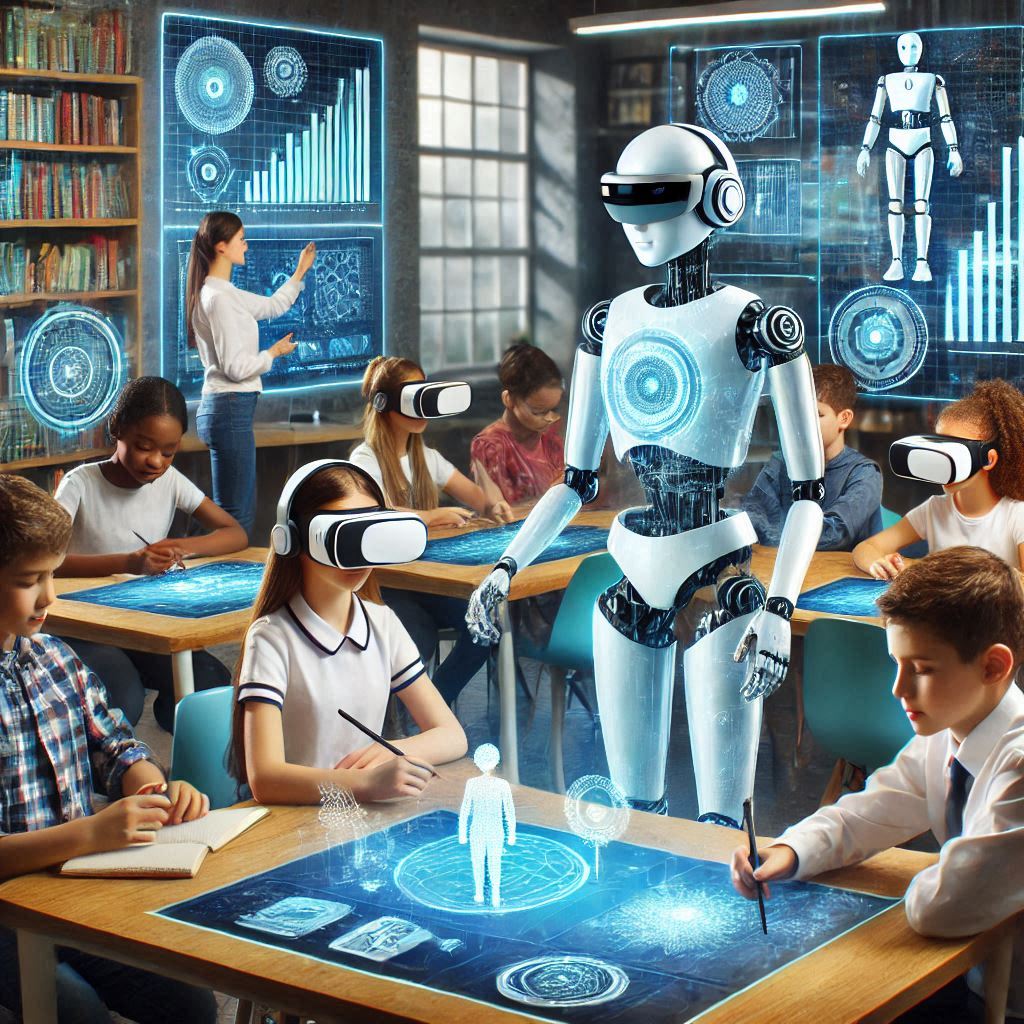
Introduction In the 21st century, technology has become an integral part of our daily lives, transforming various sectors, including education. The integration of technology in education has revolutionized the way we teach and learn, bridging the gap between traditional and digital learning. This blog post will explore the role of technology in modern education, its benefits, challenges, and the future of digital learning.
The Evolution of Educational Technology The journey of educational technology began with the introduction of basic tools like chalkboards and overhead projectors. Over the years, it has evolved to include computers, the internet, and advanced digital tools. Today, technology in education encompasses a wide range of tools and platforms, including online learning management systems (LMS), virtual classrooms, and interactive educational apps.
Benefits of Technology in Education
- Enhanced Learning Experience
- Technology has made learning more interactive and engaging. Digital tools like multimedia presentations, educational videos, and interactive simulations help students understand complex concepts more easily.
- For example, virtual labs allow students to conduct experiments in a safe and controlled environment, enhancing their practical knowledge and skills.
- Personalized Learning
- One of the most significant advantages of technology in education is the ability to provide personalized learning experiences. AI-powered platforms can analyze students’ learning patterns and adapt the curriculum to meet their individual needs.
- This ensures that each student receives the right level of challenge and support, making learning more effective and engaging.
- Accessibility and Inclusivity
- Technology has made education more accessible to students with disabilities. Assistive technologies like screen readers, speech-to-text software, and adaptive keyboards enable students with visual, auditory, or motor impairments to participate fully in the learning process.
- Online learning platforms also provide access to education for students in remote or underserved areas, breaking down geographical barriers.
- Collaboration and Communication
- Digital tools facilitate collaboration and communication among students and teachers. Platforms like Google Classroom, Microsoft Teams, and Zoom enable real-time interaction, group projects, and discussions, fostering a collaborative learning environment.
- Social media and online forums also provide opportunities for students to connect with peers and educators worldwide, expanding their learning network.
Challenges of Integrating Technology in Education
- Digital Divide
- Despite the numerous benefits, the digital divide remains a significant challenge. Not all students have access to the necessary devices and internet connectivity, leading to disparities in learning opportunities.
- Schools and governments must work together to provide equitable access to technology and ensure that all students can benefit from digital learning.
- Teacher Training and Support
- Effective integration of technology in education requires teachers to be proficient in using digital tools. However, many educators lack the necessary training and support to incorporate technology into their teaching practices.
- Professional development programs and ongoing support are essential to help teachers adapt to the changing educational landscape.
- Cybersecurity and Privacy Concerns
- The increased use of digital tools in education raises concerns about cybersecurity and data privacy. Schools must implement robust security measures to protect students’ personal information and ensure a safe online learning environment.
- Educators and students should also be educated about online safety practices and the importance of protecting their digital identities.
The Future of Digital Learning
- Blended Learning Models
- The future of education lies in blended learning models that combine traditional classroom instruction with online learning. This hybrid approach offers the best of both worlds, providing flexibility and personalized learning while maintaining the benefits of face-to-face interaction.
- Schools can use digital tools to supplement classroom teaching, offering students a more comprehensive and enriched learning experience.
- Emerging Technologies
- Emerging technologies like artificial intelligence (AI), virtual reality (VR), and augmented reality (AR) have the potential to further transform education. AI-powered tutors, VR-based immersive learning experiences, and AR-enhanced textbooks can provide students with innovative and engaging ways to learn.
- These technologies can also help educators create more dynamic and interactive lessons, catering to different learning styles and preferences.
- Lifelong Learning
- Technology has made lifelong learning more accessible and convenient. Online courses, webinars, and educational apps enable individuals to continue their education and acquire new skills throughout their lives.
- This shift towards continuous learning is essential in today’s rapidly changing world, where staying updated with the latest knowledge and skills is crucial for personal and professional growth.
Conclusion The integration of technology in education has brought about significant changes, enhancing the learning experience, providing personalized education, and making learning more accessible and inclusive. However, challenges like the digital divide, teacher training, and cybersecurity must be addressed to fully realize the potential of digital learning. As we look to the future, blended learning models and emerging technologies will continue to shape the educational landscape, creating a more dynamic, engaging, and effective learning environment for all students.